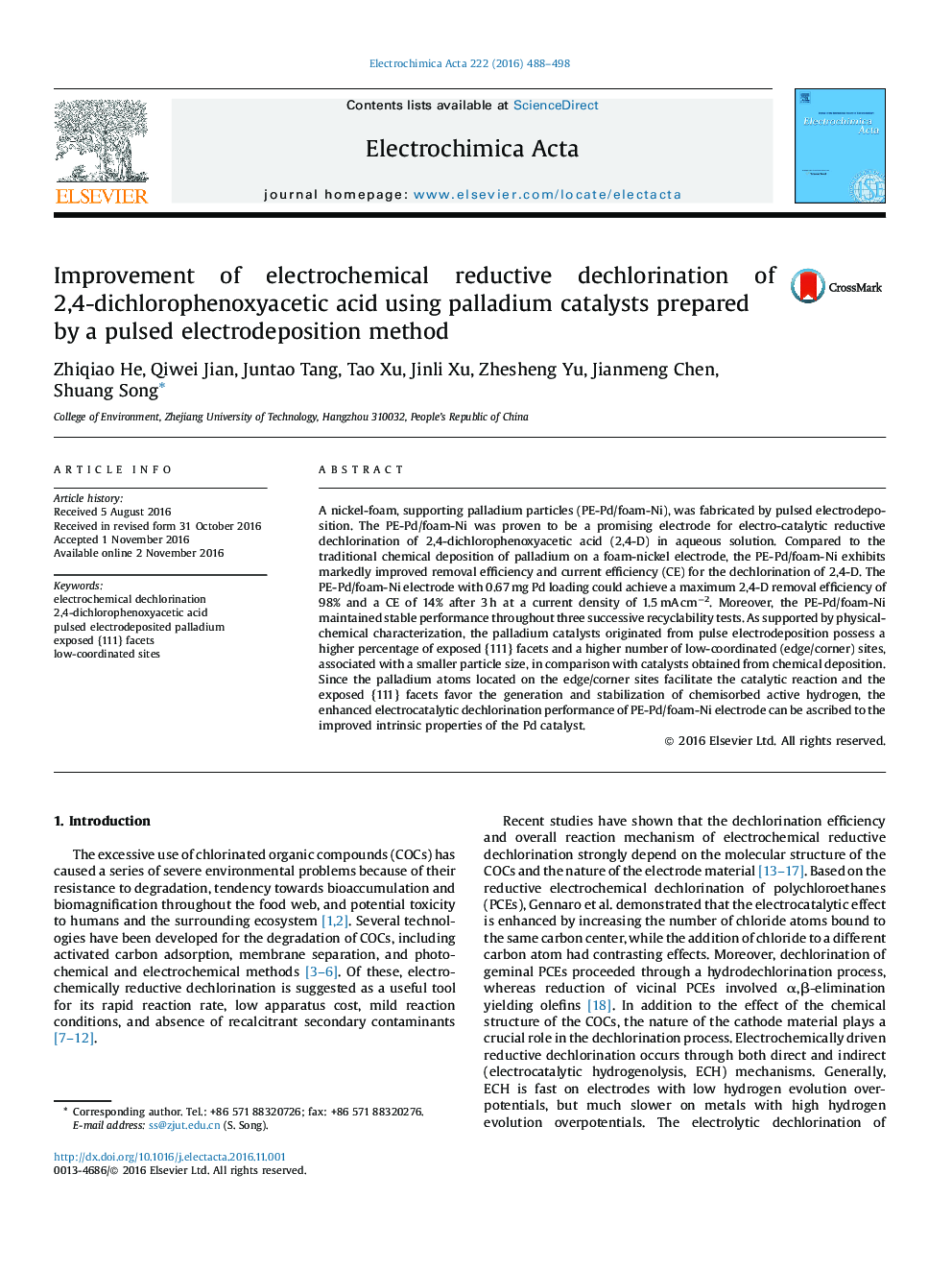| Article ID | Journal | Published Year | Pages | File Type |
|---|---|---|---|---|
| 6472620 | Electrochimica Acta | 2016 | 11 Pages |
â¢Pd is deposited onto Ni foam by a pulsed electrodeposition method.â¢The prevalence of the edge/corner sites.â¢The completely exposed {111} planes.â¢Excellent electrocatalytic activity and stability towards dechlorination of 2,4-D.
A nickel-foam, supporting palladium particles (PE-Pd/foam-Ni), was fabricated by pulsed electrodeposition. The PE-Pd/foam-Ni was proven to be a promising electrode for electro-catalytic reductive dechlorination of 2,4-dichlorophenoxyacetic acid (2,4-D) in aqueous solution. Compared to the traditional chemical deposition of palladium on a foam-nickel electrode, the PE-Pd/foam-Ni exhibits markedly improved removal efficiency and current efficiency (CE) for the dechlorination of 2,4-D. The PE-Pd/foam-Ni electrode with 0.67Â mg Pd loading could achieve a maximum 2,4-D removal efficiency of 98% and a CE of 14% after 3Â h at a current density of 1.5Â mAÂ cmâ2. Moreover, the PE-Pd/foam-Ni maintained stable performance throughout three successive recyclability tests. As supported by physical-chemical characterization, the palladium catalysts originated from pulse electrodeposition possess a higher percentage of exposed {111} facets and a higher number of low-coordinated (edge/corner) sites, associated with a smaller particle size, in comparison with catalysts obtained from chemical deposition. Since the palladium atoms located on the edge/corner sites facilitate the catalytic reaction and the exposed {111} facets favor the generation and stabilization of chemisorbed active hydrogen, the enhanced electrocatalytic dechlorination performance of PE-Pd/foam-Ni electrode can be ascribed to the improved intrinsic properties of the Pd catalyst.
Graphical abstractDownload high-res image (140KB)Download full-size image
